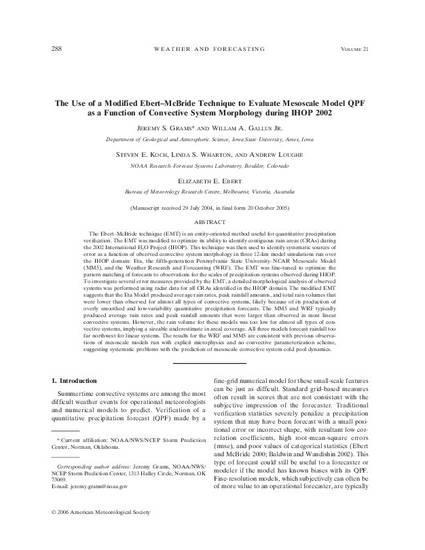
The Ebert-McBride technique (EMT) is an entity-oriented method useful for quantitative precipitation verification. The EMT was modified to optimize its ability to identify contiguous rain areas (CRAs) during the 2002 International H2O Project (IHOP). This technique was then used to identify systematic sources of error as a function of observed convective system morphology in three 12-km model simulations run over the IHOP domain: Eta, the fifth-generation Pennsylvania State University-NCAR Mesoscale Model (MM5), and the Weather Research and Forecasting (WRF). The EMT was fine-tuned to optimize the pattern matching of forecasts to observations for the scales of precipitation systems observed during IHOP. To investigate several error measures provided by the EMT, a detailed morphological analysis of observed systems was performed using radar data for all CRAs identified in the IHOP domain. The modified EMT suggests that the Eta Model produced average rain rates, peak rainfall amounts, and total rain volumes that were lower than observed for almost all types of convective systems, likely because of its production of overly smoothed and low-variability quantitative precipitation forecasts. The MM5 and WRF typically produced average rain rates and peak rainfall amounts that were larger than observed in most linear convective systems. However, the rain volume for these models was too low for almost all types of convective systems, implying a sizeable underestimate in areal coverage. All three models forecast rainfall too far northwest for linear systems. The results for the WRF and MM5 are consistent with previous observations of mesoscale models run with explicit microphysics and no convective parameterization scheme, suggesting systematic problems with the prediction of mesoscale convective system cold pool dynamics.
Available at: http://works.bepress.com/william_gallus/22/

This article is from Weather and Forecasting 21 (2006): 288, doi: 10.1175/WAF918.1. Posted with permission.